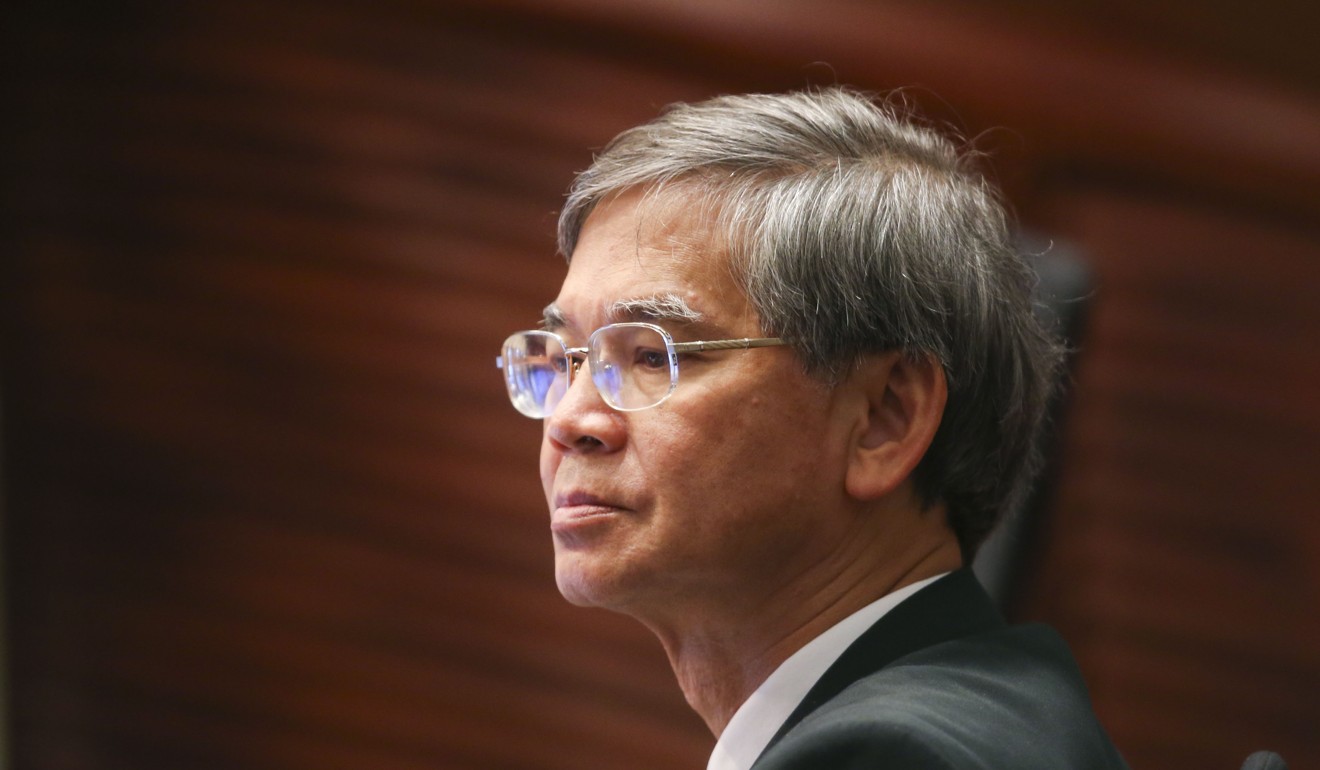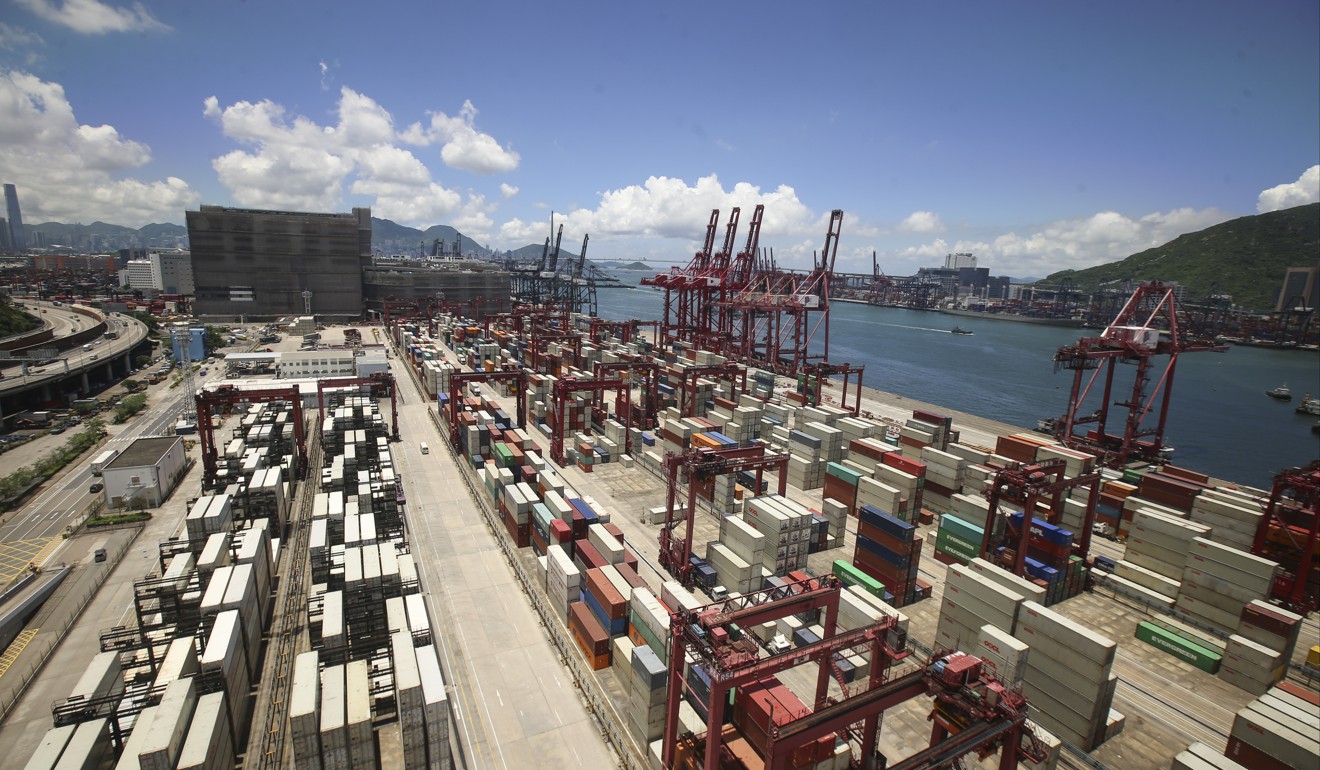
From artificial islands to maternity leave: five things to watch out for in Carrie Lam’s 2018 policy address
Carrie Lam is expected to announce at least 250 initiatives during her second policy address
As it happened: Hong Kong leader Carrie Lam’s 2018 policy address
She said last month she would be locking herself up to work on her speech, which is the chief executive’s major annual address setting out the government’s new policies and goals for the year ahead.

She will be doing things her way when she presents her second policy address.
And unlike past leaders who chose different colours and themes for the bound copies of their annual policy blueprint each year, Lam is sticking with sky blue – the colour she used for her election campaign and first address last year.
All eyes are on her plans to increase land supply amid a severe housing shortage in Hong Kong.
Observers are also curious to see if she introduces more pro-labour initiatives – including longer maternity leave for working women – without riling the business sector which wants more support against the backdrop of the ongoing United States-China trade war.
Here are the five things to watch out for in Lam’s 2018 policy address:
1. Reclamation as the highlight of housing strategy
The government’s land supply task force has yet to present its report of a five-month public consultation over 18 potential land creation options, but Lam is expected to announce an array of ideas to create affordable housing.
It is understood that she will highlight reclamation as the key housing strategy while pledging to use most of the land created for subsidised and public rental flats.

She is expected to endorse the controversial idea to build an artificial island to the east of Lantau, a reclamation project which could take more than 20 years.
The suggestion was floated by the government and Our Hong Kong Foundation, founded by the city’s first chief executive Tung Chee-hwa, and involves reclaiming 1,000 to 2,200 hectares, an area big enough to house between 400,000 and 1.1 million people.
Hong Kong land reclamation explained: the good, bad and ugly methods of pushing back the sea
Critics have said the mega project would be hugely expensive and vulnerable to flooding caused by rising water levels, including tidal surges associated with super typhoons.
Lam is also expected to suggest using private farmland held by developers in the New Territories to fast track plans for a massive new town in the New Territories North development. This will release 200 hectares of agricultural for flats.
Given Hong Kong’s housing woes, three industrial buildings in Kwun Tong might also be converted into transitional housing.
2. More family-friendly and pro-labour policies
Lam is expected to give working women four more weeks of maternity leave, raising the current statutory requirement of 10 weeks’ leave, which has gone unchanged for 48 years.
Working mothers are currently paid 80 per cent of their wages while on maternity leave.
The government has said it will follow the Singapore model of subsidising employers to cover the additional costs of increased maternity leave, up to a limit. The key question is what the cap on subsidies will be.

The change is expected to apply to civil servants first, and will finally put Hong Kong on par with International Labour Organisation (ILO) standards, but small and medium-sized business employers have been up in arms at the prospect of increased costs from this change and have demanded a full subsidy.
Maternity leave in Hong Kong: can Chief Executive Carrie Lam bring city in line with Singapore and South Korea without riling the business community?
Hong Kong’s fertility rate has slid below replacement level, and the female labour participation rate stands at just 55 per cent.
Secretary for Labour and Welfare Dr Law Chi-kwong has also said it is hard to tell if giving working women more maternity leave will result in more babies for Hong Kong.

Her administration is determined to scrap the controversial MPF offsetting mechanism which allows employers to offset staff long service and severance payments with the employer’s share of MPF contributions.
Hong Kong business leaders wary of giving full backing to improved HK$29 billion MPF subsidy plan to stop bosses raiding workers’ pension funds
There has been tremendous opposition to change from the business sector, in particular small and medium enterprises.
Under the revised plan, the government is expected to offer about HK$29 billion (US$3.7 billion) to employers over 25 years to soften the blow on them, instead of the HK$17.2 billion (US$2.2 billion) over 12 years under its previous proposal.
3. Taking a fine line on politics
While the government offered no reason, the action has been linked widely to his role as acting president of the Foreign Correspondents’ Club (FCC).

Mallet chaired a pro-independence talk by Hong Kong National Party convenor Andy Chan Ho-tin at the FCC in August, despite strong objections from the city’s government and Beijing.
Beijing and its loyalists have long signalled their impatience over the lack of progress in Hong Kong to enact its own national security legislation, as stipulated in Article 23 of the Basic Law, the city’s mini constitution.
Hong Kong’s denial of work visa for journalist Victor Mallet sends ‘chilling message’ about erosion of basic rights, Financial Times says
In a combative gesture against rising separatist sentiment in 2015, former chief executive Leung used his policy address to hit out at student leaders, accusing the University of Hong Kong student union publication, Undergrad, of “advocating independence” and “putting forward fallacies” concerning self-determination for the city. Critics slammed what he did as unnecessary.
A government source said that despite mounting pressure, it is unlikely that Lam will adopt Leung’s combative style. Instead, she is likely to only reiterate the government’s constitutional responsibility to enact national security legislation while emphasising the need to create a favourable social environment to handle the issue – a safe line she has adopted since running for the top job last year.
4. University partnerships for innovation research
Lam has prioritised innovation and technology development and last year set aside more than HK$10 billion for university research funding plus additional tax cuts to encourage companies to invest in research and development.
One year on, she is expected to announce a new platform to enable universities to pair up with internationally renowned research institutions to develop biomedical, artificial intelligence and robotic technologies.
Detailed plans for Hong Kong’s universities to partner with top international research institutes expected in policy address
The international institutions which have expressed interest include the Massachusetts Institute of Technology in the United States, the University of Waterloo in Canada and EPFL, the second best university in Switzerland which specialises in natural sciences and engineering.
It is understood that Chinese University, City University and the Hong Kong University of Science and Technology are already forming partnerships with overseas counterparts.
5. Reviving the maritime industry amid trade war
She also acknowledged the International Maritime Organisation’s 2020 sulphur cap would further drive up operating costs as the industry must do more to control emissions.
She has asked the industry insiders to watch for measures in her policy blueprint to boost the city’s maritime services.

A source suggested that the administration is mulling over tax sweeteners to lure big firms in a bid to help Hong Kong fight against rival Singapore to reclaim its place among the world’s top four container ports. Currently Singapore is No 2 and Hong Kong is No 5.
It is understood that the government might adopt some recommendations made in a report submitted by the Financial Services Development Council in May.
The list of suggestions included halving the profit tax for firms in ship leasing management and support service, negotiating more double-tax agreements with major shipping jurisdictions like Australia and Brazil, and creating a centralised office to oversee and coordinate shipping policies.

